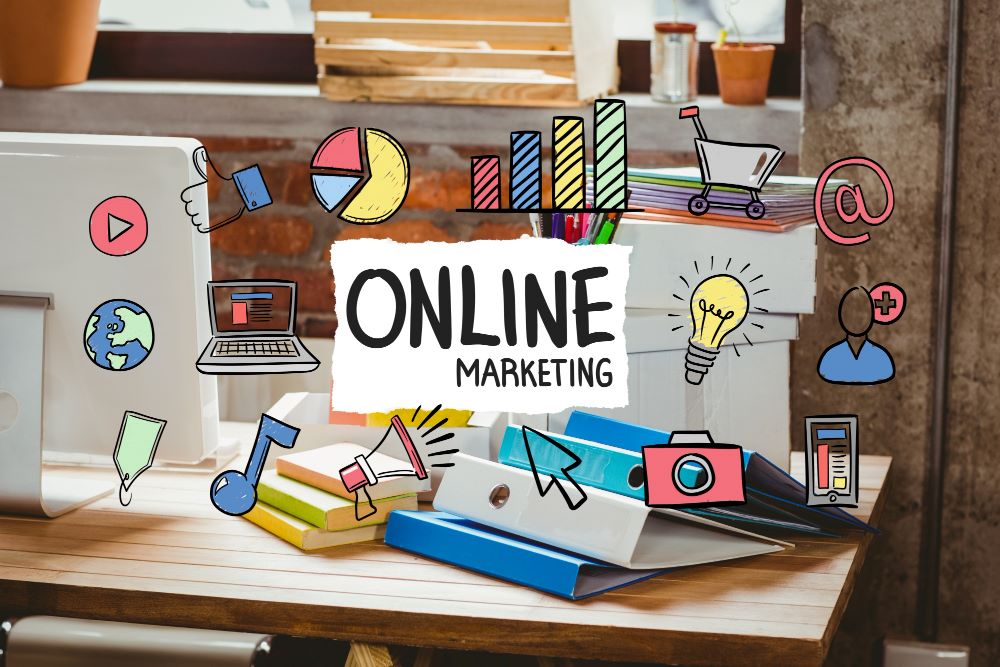In today’s digital age, businesses face intense competition for the attention of consumers. As a result, marketers are always on the lookout for new and creative ways to capture the attention of their target audience. One strategy that has gained significant traction in recent years is the use of digital art in digital marketing.
Digital art offers a unique and visually appealing way to convey a brand’s message to its audience. With the help of talented digital artists, brands can create custom digital art that effectively communicates their brand’s personality, values, and offerings. From illustrations and animations to augmented reality experiences, the possibilities are endless when it comes to using digital art in digital marketing.
In this SiteWise article, we’ll explore the world of digital art in digital marketing, including its benefits, examples of successful campaigns, and how to measure its success. We’ll also take a look at some emerging trends in the field and discuss how brands can stay ahead of the curve. So, whether you’re a marketer looking to incorporate digital art into your strategy or simply curious about the power of this creative medium, read on to learn more.
Let’s design, maintain, and perfect your dream website!
Table of Contents
Examples of Successful Digital Art in Digital Marketing
Digital art has become an integral part of digital marketing campaigns, as it provides a visually appealing and engaging way to convey messages and brand values.
There are many successful examples of digital art being used in digital marketing campaigns. These examples demonstrate the power and effectiveness of incorporating custom digital art into marketing strategies. Digital art can be used to convey brand values, create inspiring messages, and capture the attention of the audience, making it an essential tool for any digital marketer.
The Adobe Creative Cloud Campaign
Adobe Creative Cloud is a popular software suite for creative professionals, and the company used custom digital art in its digital marketing campaign to highlight the capabilities of the software suite. The campaign featured stunning illustrations and animations that showcased the versatility and creativity of Adobe’s products. The digital art was designed to appeal to a creative audience, and the campaign was highly successful in generating buzz and interest in Adobe Creative Cloud.
The Coca-Cola ‘Taste the Feeling’ Campaign
Coca-Cola’s ‘Taste the Feeling’ campaign used digital art in the form of illustrations and animations to convey the brand’s message. The campaign featured custom digital art that reflected the brand’s personality and values, using bold and bright colors to capture the attention of the audience. The digital art was incorporated across various channels, including social media, TV commercials, and print ads, and was highly successful in creating brand awareness and engagement.

The Nike ‘Unlimited You’ Campaign
Nike’s ‘Unlimited You’ campaign was a great example of using digital art to create a powerful and inspiring message. The campaign featured custom digital art that showcased the brand’s athletes pushing their limits and achieving greatness. The digital art was designed to be visually striking and engaging, capturing the spirit of Nike’s brand values. The campaign was highly successful in creating buzz and engagement on social media, and the digital art was widely shared and appreciated.

The Old Spice ‘Smell Like a Man’ Campaign
Old Spice’s ‘Smell Like a Man’ campaign was a humorous take on the traditional men’s grooming industry. The campaign featured custom digital art that was both visually striking and humorous, using over-the-top illustrations and animations to convey the brand’s messaging. The digital art was incorporated across various channels, including TV commercials, social media, and print ads, and was highly successful in creating brand awareness and engagement. The campaign was so successful that it spawned numerous parodies and memes, further increasing the brand’s reach and popularity.

How to Measure the Success of Your Digital Art in Digital Marketing
Measuring the success of your digital art in digital marketing is crucial to optimizing your strategy and achieving your marketing goals. By tracking engagement, conversion, reach, and brand awareness metrics, you can gain valuable insights into the impact of your digital art on your audience and adjust your strategy accordingly. Additionally, optimizing your digital art with high-quality images, branding elements, and testing and refining can help you drive better results and achieve digital marketing success.
Metrics to Measure the Success of Digital Art in Digital Marketing
Some metrics to track include engagement metrics such as likes, shares, comments, and followers, which can help you understand the level of engagement your digital art is receiving from your audience. Conversion metrics such as click-through rates, leads generated, and sales can also help you determine how effective your digital art is at converting your audience into customers. Here are some metrics to track:
Engagement Metrics
Engagement metrics, such as likes, shares, and comments, can help you determine the level of engagement your digital art is receiving from your audience.
Conversion Metrics
Conversion metrics, such as click-through rates and sales, can help you determine how effective your digital art is at converting your audience into customers.
Reach Metrics
Reach metrics, such as impressions and reach, can help you determine how many people your digital art is reaching. This is an important metric to track as it can give you an idea of the size of your audience and the potential impact of your digital art.
Brand Awareness Metrics
Brand awareness metrics, such as brand recall and brand recognition, can help you determine how effective your digital art is at increasing brand awareness. This is an important metric to track as it can help you understand the impact of your digital art on brand perception and recognition.
Tips for Optimizing Your Digital Art for Digital Marketing Success
Optimizing your digital art for digital marketing success can help you achieve your marketing goals and drive results. Some tips for optimizing your digital art include considering your audience and creating art that appeals to them, using clear calls-to-action to encourage conversions, and testing different versions of your digital art to see which performs best. Additionally, regularly monitoring your metrics and adjusting your strategy accordingly can help you continue to optimize your digital art for success in digital marketing.
Define Your Goals and Target Audience
Before creating digital art for your digital marketing campaign, it’s important to define your goals and target audience. This will help you create digital art that resonates with your audience and drives the desired results.
Use High-Quality Images and Graphics
High-quality images and graphics are essential for creating digital art that captures the attention of your audience. Make sure to use images and graphics that are clear, visually appealing, and relevant to your messaging.
Incorporate Branding Elements
Incorporating branding elements, such as logos and brand colors, into your digital art can help increase brand recognition and awareness. Make sure to use branding elements consistently across all digital art to create a cohesive brand identity.
Test and Refine Your Digital Art
Testing and refining your digital art is essential to optimize your digital marketing strategy. Use A/B testing to compare different versions of your digital art and determine which performs better. Refine your digital art based on the results to improve its effectiveness and drive better results.
The Future of Digital Art in Digital Marketing
The use of digital art in digital marketing has been gaining popularity in recent years, and the future looks even brighter with brands looking to incorporate custom digital art into their marketing strategies
As digital art continues to evolve, brands must keep up with the latest trends and incorporate them into their marketing strategies to stay relevant and engage their audience.

As technology advances and consumer behaviors evolve, here are some trends to watch out for in the future of digital art in digital marketing.
Augmented Reality
Augmented reality is a technology that overlays digital content onto the real world, creating an immersive experience for users. Brands are starting to use augmented reality in their digital marketing campaigns, creating custom digital art that interacts with the real world. For instance, furniture companies can use augmented reality to show how a piece of furniture would look in a customer’s home.
Interactive Content
Interactive content is becoming increasingly popular in digital marketing. Brands are incorporating custom digital art into their interactive content, creating engaging experiences for their audience. Interactive content can be in the form of quizzes, games, and polls. For instance, a fashion brand could use a quiz to help customers determine their style preference and then showcase their products accordingly.
Personalized Digital Art
Personalization is an essential aspect of digital marketing, and it can be applied to digital art as well. Brands can create personalized digital art by using data such as user preferences, behavior, and location. For instance, an airline company can use personalized digital art to show customers flights that match their travel history and preferences.
Immersive Video
Immersive video is an emerging trend in digital marketing that allows customers to interact with digital art in a 360-degree format. Immersive videos can be used in digital marketing campaigns to showcase products, services, or experiences. For instance, a tourism company could create an immersive video showcasing popular tourist destinations in a particular city.
Conclusion
In conclusion, digital art has proven to be a powerful tool for businesses looking to stand out in the crowded digital marketing landscape. By incorporating custom digital art into their marketing campaigns, brands can effectively capture the attention of their target audience and communicate their message in a visually appealing way. From illustrations and animations to augmented reality experiences, the possibilities for using digital art are endless.
While the benefits of digital art in digital marketing are clear, it’s important to measure its success to ensure the effectiveness of the strategy. By tracking engagement and conversion metrics, brands can gain valuable insights into how their digital art is resonating with their audience and adjust their strategy accordingly.
Looking to the future, the trend of using digital art in digital marketing is only set to grow. With emerging technologies such as augmented reality and interactive content, the potential for using digital art to create engaging and immersive experiences for audiences is immense. As such, brands that embrace digital art as part of their marketing strategy are likely to enjoy a competitive advantage over those that do not.
FAQs of Digital Art in Digital Marketing
What is digital art in digital marketing?
Digital art in digital marketing refers to the use of custom digital art, such as illustrations, animations, and graphics, in marketing campaigns. It is a creative way for brands to stand out in a crowded digital landscape and communicate their message to their audience.
How effective is digital art in digital marketing?
Digital art in digital marketing can be very effective when used correctly. It can increase engagement with your audience, convey your brand’s personality and values, and differentiate your brand from competitors.
How do I measure the success of my digital art in digital marketing?
You can measure the success of your digital art in digital marketing by tracking engagement metrics, such as likes, shares, and comments, as well as conversion metrics, such as click-through rates and sales.
How can I optimize my digital art for digital marketing success?
You can optimize your digital art for digital marketing success by making sure it aligns with your brand’s messaging and values, using high-quality images and animations, and testing different designs to see what resonates best with your audience.
What are some future trends for digital art in digital marketing?
Some future trends for digital art in digital marketing include augmented reality, interactive content, and personalized visuals that adapt to individual users’ preferences and behaviors.

